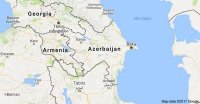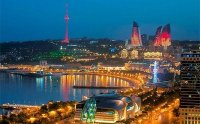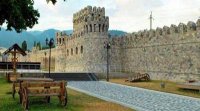In the 1990’s the term “multicultural” seemed to be the magical word to use to describe a developed, strong and culturally advanced country. In the various news every nation of Europe proudly displayed the wonderful variety of people, languages and religions in their major cities: London, Paris, New York, Berlin declared to the world to be leaders not only in the economic sector, but also in the very building of identities and world society.
Multiculturalism was nothing more than a synonym for success and leadership. A few decades have been enough, not to mention the tragic collapse of the Twin Towers, to transform any positive idea of diversity into its opposite: the “clash of civilisations” theorized by Samuel P. Huntington seemed to many people the only plausible outcome for worlds considered totally different and even hostile to each other.

- Azerbajan, mappa
The truth of the Parisian suburbs, along with the increasingly bloody murders of American blacks or the odious and capillary discrimination of Muslims – without any distinction of ethnicity, confession, nationality and social status – have transformed globalization and its opponents, by paraphrasing a famous work by J. Stiglitz, into social cage.
The novelty of the last few years, which have been devastated by various revanchisms and racialisms of all kinds, is that they don’t want to escape the cage, but keep out the “others”. Walls, picked fences or fences are commonplace and transversely belong to the vocabulary of politics, politics which increasingly frightens and are subject to populisms of all kinds.
This new era clearly shows what the theoretical origin of the problem is. The word “TOLERANCE”, used always and only in positive terms, has hidden and covered something more dangerous, which only today is taken into account: grown on fragile bases, we “tolerant” Europeans have been seduced by politicians without whom we all hoped history could finally do. Why? The reason is that the concept of tolerance doesn’t imply at all an “exclusively” positive effect, but it also reveals a racist content which,– underestimated for too long – has come up with consequent dangers due to the economic crisis.

- Baku, la capitale
“TOLERATE” can also mean “BEAR” the others, to whom, though they have the right to live, we do not recognise the same level of dignity (after Auschwitz it seems impossible to deny life officially, so much so that even the negationists state precisely that gas chambers have never existed).
The “others” can stay, live and ask for residence in his/her territory only when his/her presence does not cause any change to the previous social status: in short, he /she can stay if we never meet him/her on the street. This concept has by now transformed multiculturalism, by making it a threat to many people: today too many are those who are seduced by right-wings xenophobes, and not even the left-wing is immune from elitist and racist attitudes.
Within this political framework, Europe once again shows itself to be logocentric and closed to the outside world, avoiding confrontation with different realities which are instead capable of teaching, winning and concrete, non-abstract models of coexistence.
Azerbaijan is one of those little-known lands, which is hard off only in apathetic and reductive terms, but which actually conceals a profound teaching and consolidated patterns of (positive) tolerance.
Thanks to the “Baku International School” this little small state of Central Asia is strongly promoting an idea of multiculturalism based on equality and absence of discriminatory hierarchy; a transverse, real and historically millennial brotherhood.
Thanks to a study trip made in February, and a recent meeting held in Augsburg, in Germany, I had the chance to personally know a land where mosques, churches and synagogues stand alongside each other, and where communities live serenely.

- Azerbaijan-Ismayilli
Azerbaijan is an incredible model of different cultures: more than 700 ethnicities live here, and is the only place in the world, where Shiites and Sunni pray in the same sacred places. Walking through the capital Baku is an exercise recommended for the ever sceptic: feeling the energy with which a muslin state promotes culture and integration and even supports other confessions is the best example of how an integration policy based on the respect of any human being can still be done.
What Azerbaijan declares to the world is that multiculturalism is not a problem, but an opportunity. Without wanting to idealise a country which like others has its own critical elements, we can certainly state without fear of being denied that this wonderful land should be studied with more humility, and its model of life analysed with great attention and respect, a respect that old Europe is destined to lose if it doesn’t firmly fight any attempt which tries to distinguish people by ethnicity, colour of skin, or individual beliefs and continues to lock up in memories of an increasingly distant and abstract past.